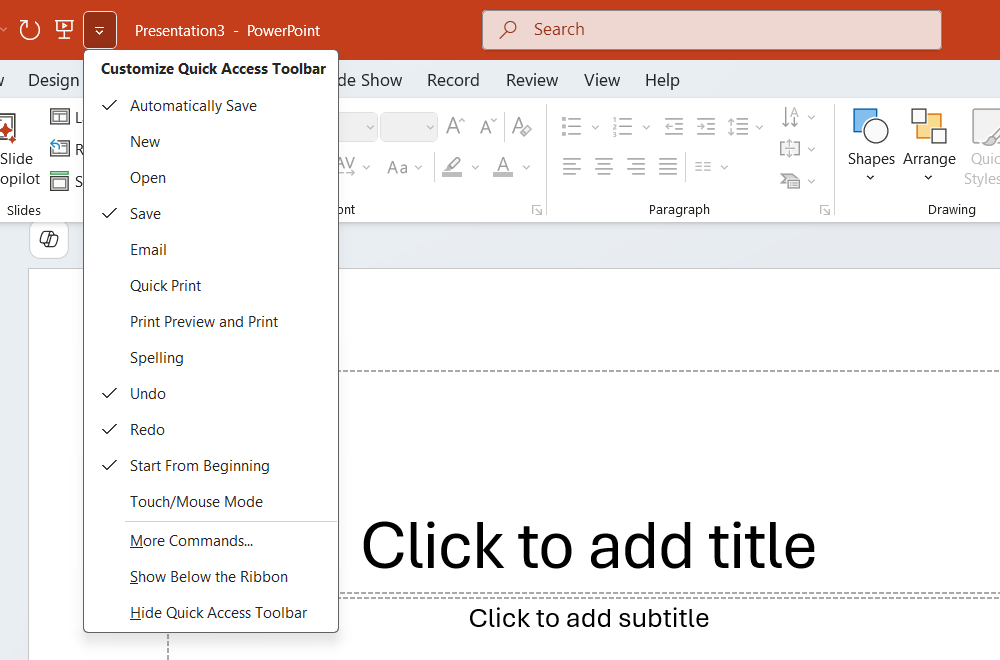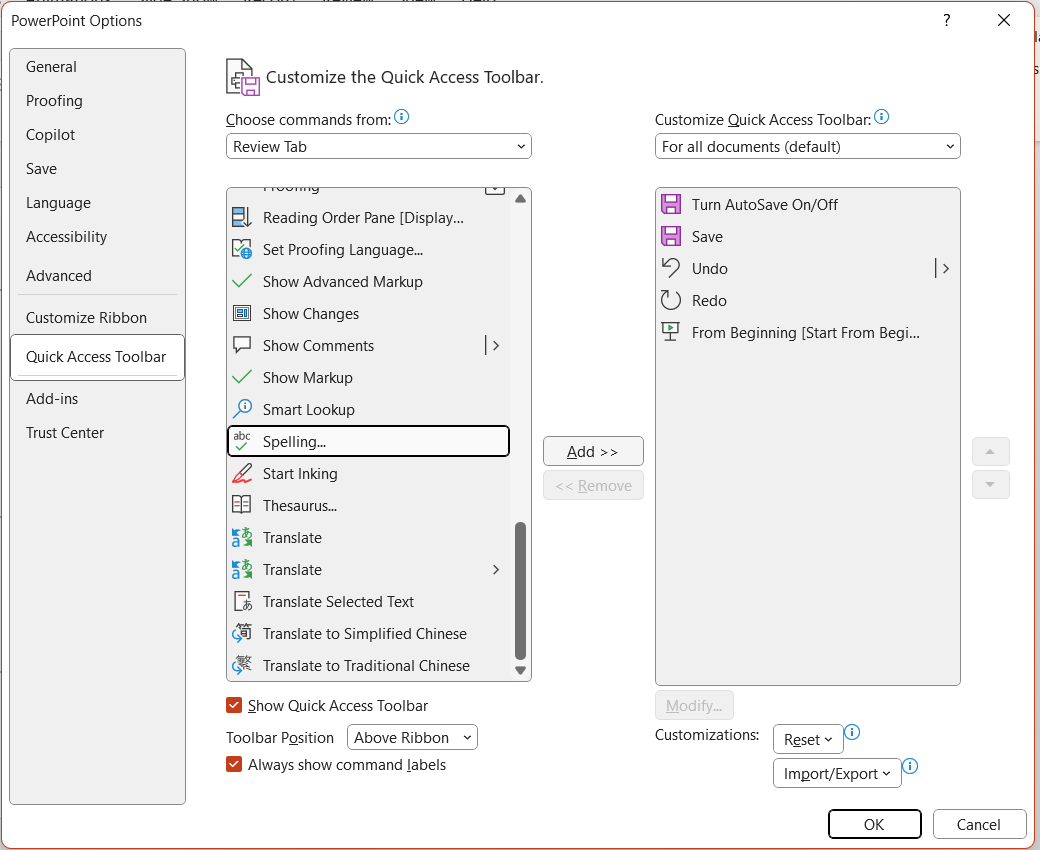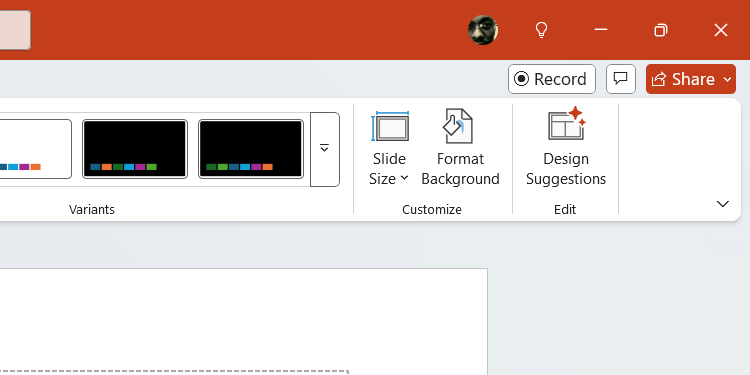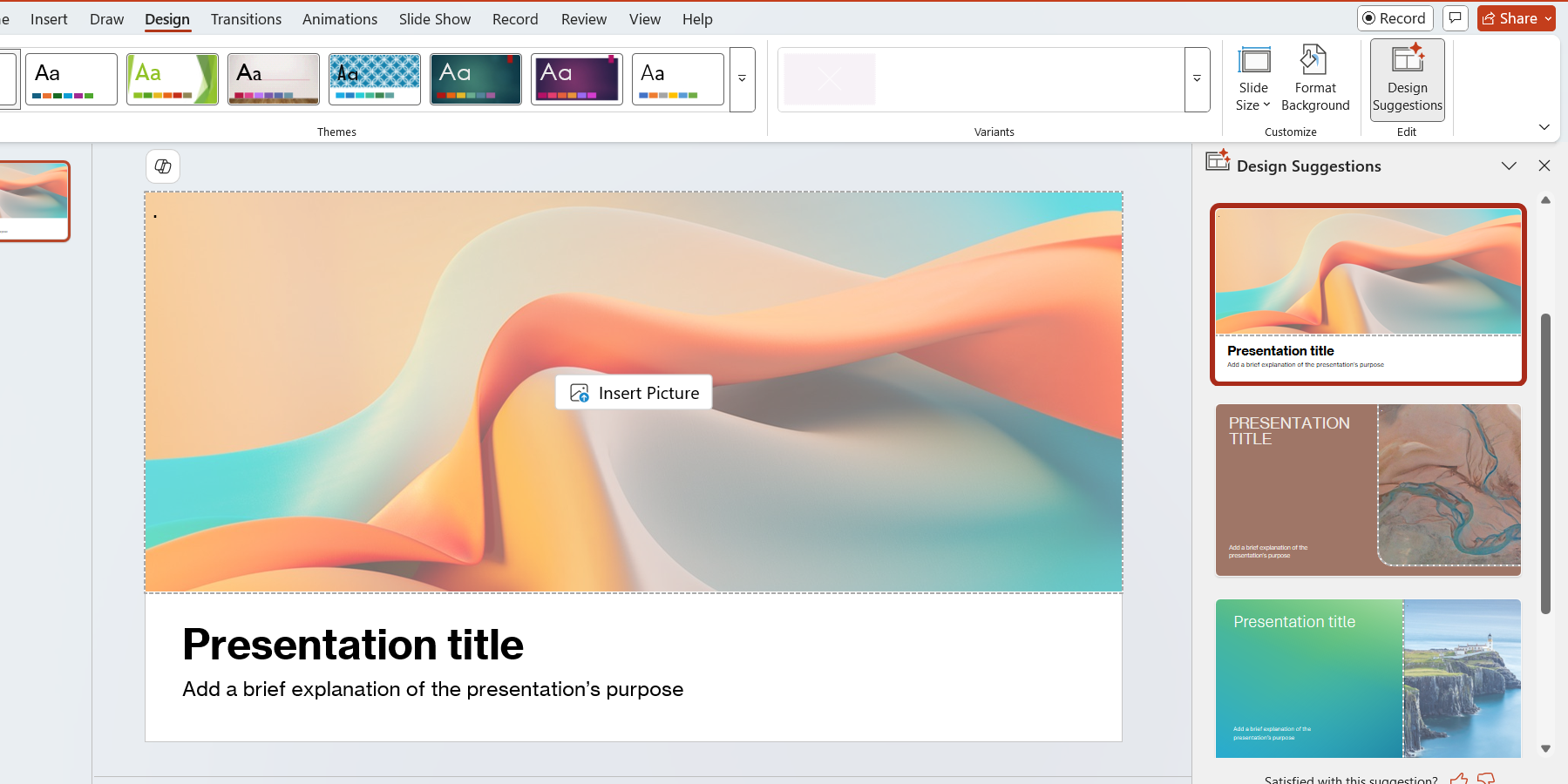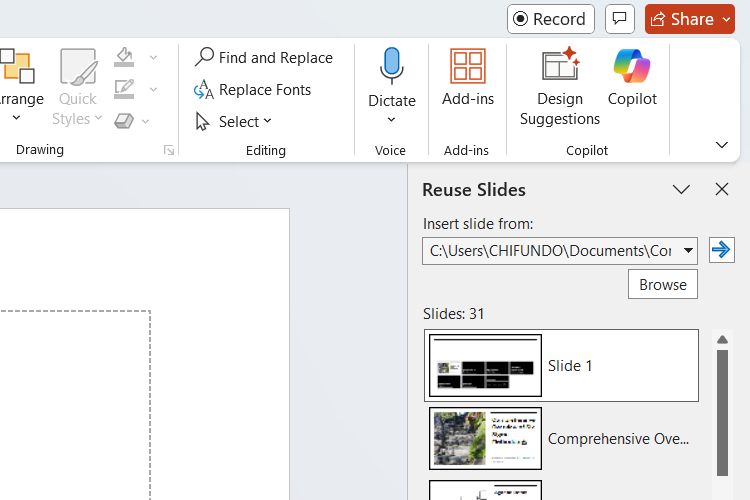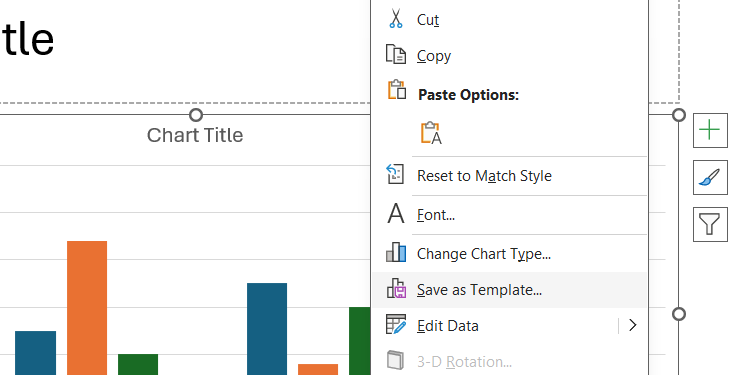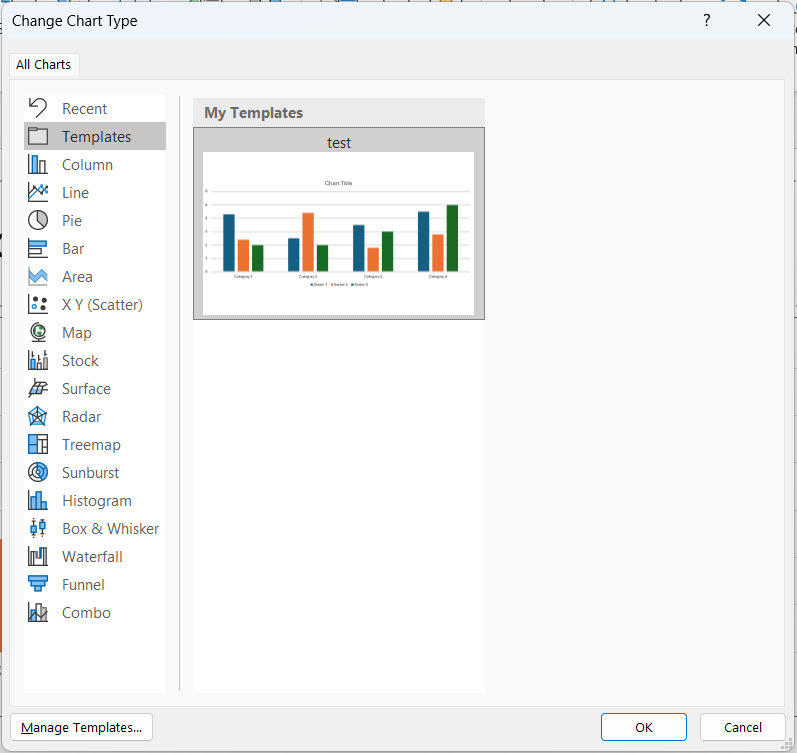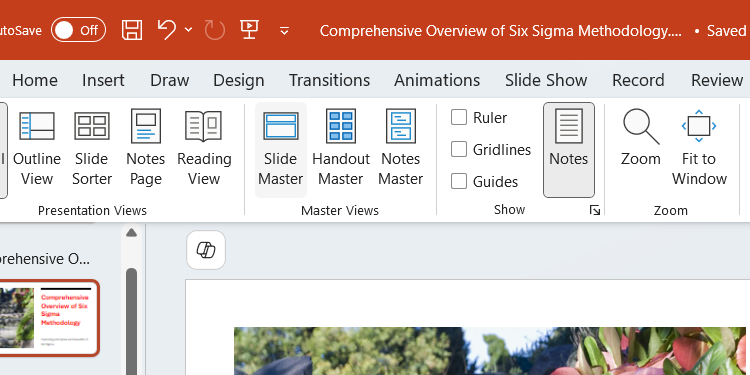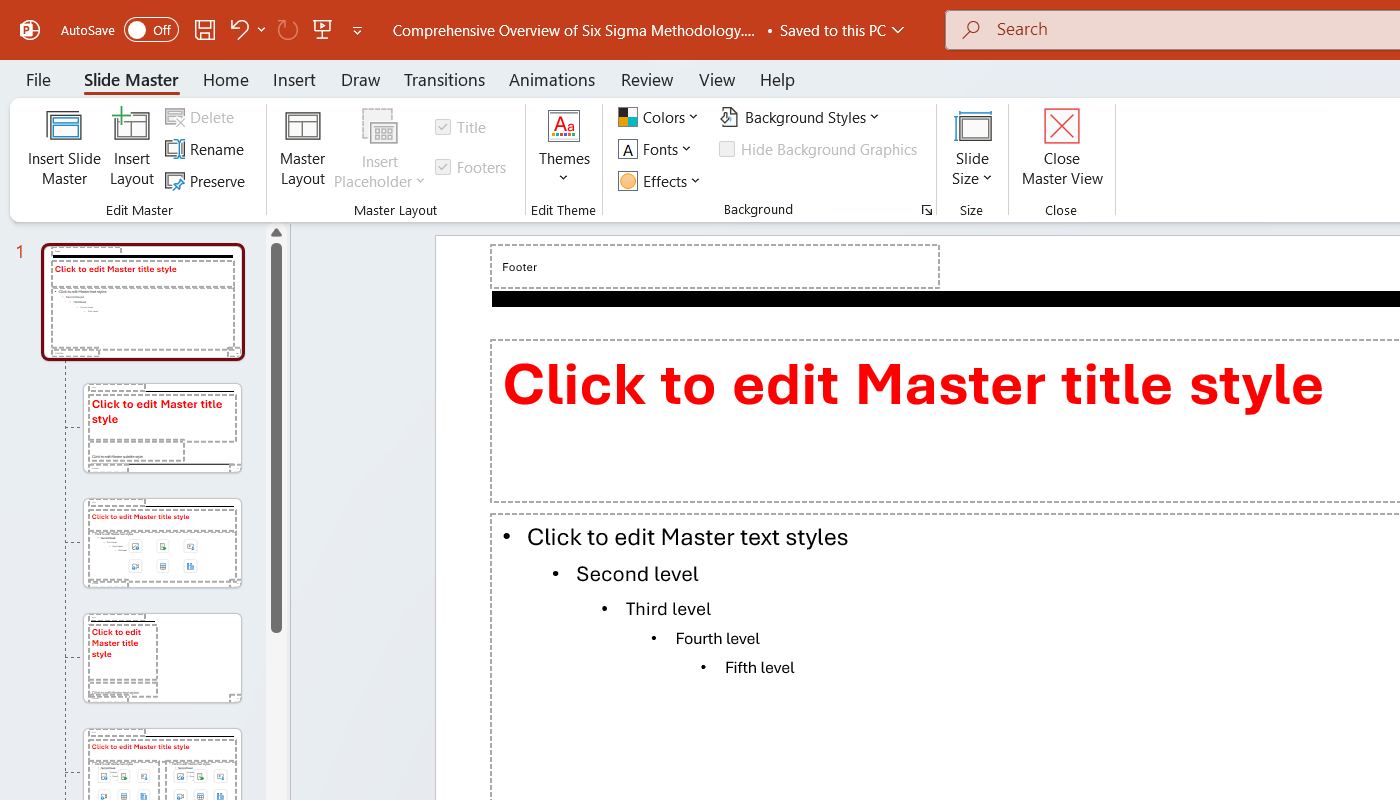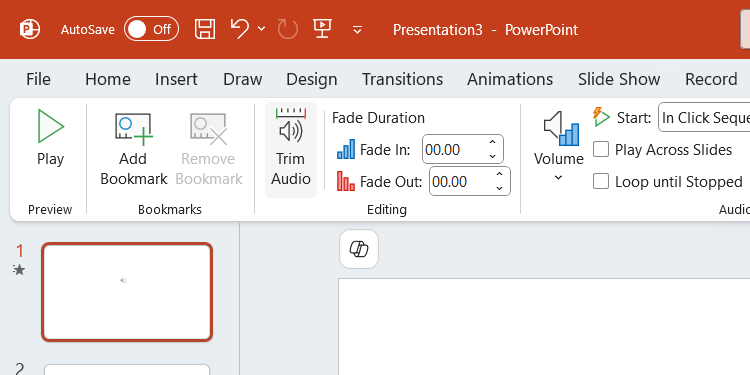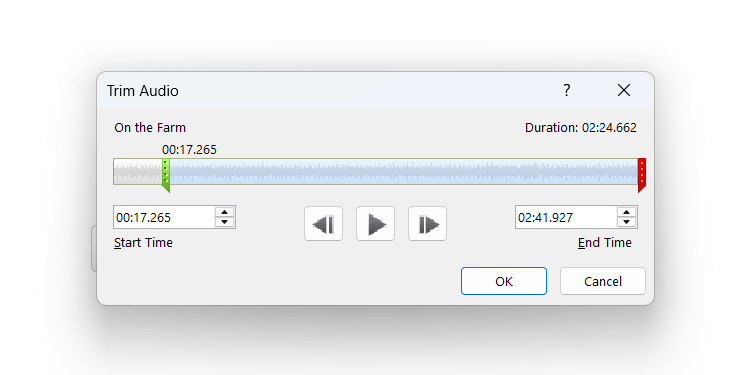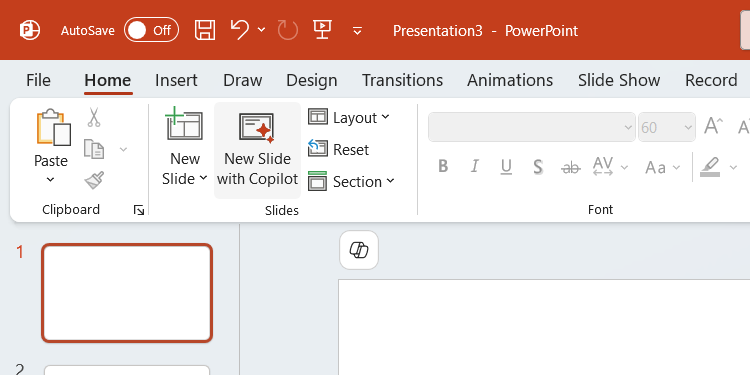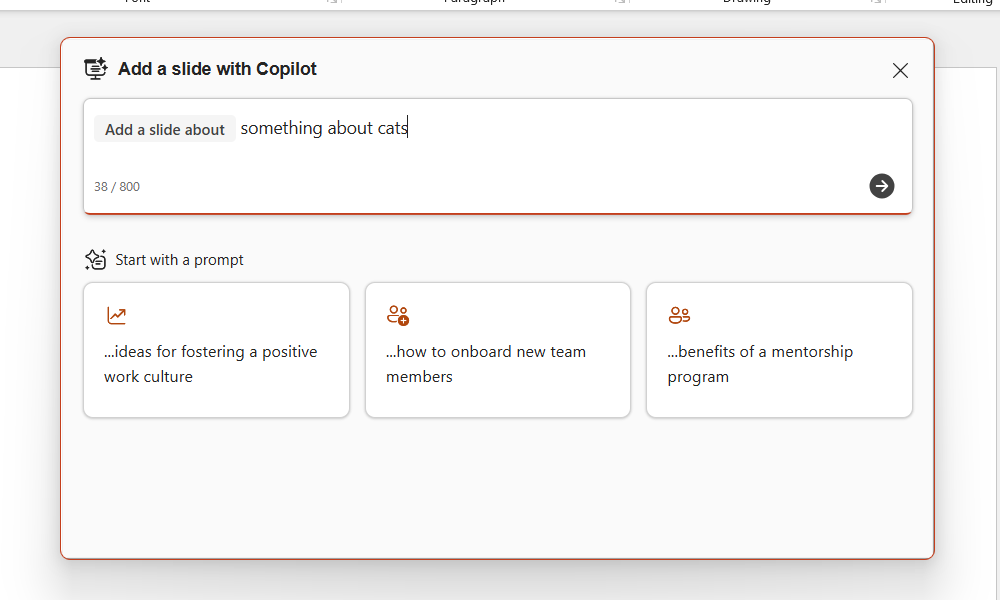Making slides can eat up way too much time, especially if you’re only using the basics. PowerPoint is so feature-rich that it’s easy to overlook the most useful ones. Once you know them, you’ll wonder how you ever did slides the hard way.
Slide creation would be quicker if you had easy access to your most frequently used commands. The best way to do this is to add them to the Quick Access Toolbar instead of relying solely on the menu items in the ribbon—something many of us do.
To tweak the Quick Access Toolbar, go to File > Options > Quick Access Toolbar. Select a command (e.g., New Slide, Shapes, or Format Painter) on the left, click Add to move it to the right, and then click OK. This will add it to the Quick Access Toolbar.
If you don’t see the commands you want, set the Choose commands from dropdown to the tab with the commands you want.
7
Get Inspiration from Design Suggestions
A good design can make your presentation pop, and this is where people spend a lot of time. With Design Suggestions, PowerPoint can generate professional layouts that fit your content. This allows you to polish your slides in seconds.
To use Design Suggestions, select the Designer tab and click Design Suggestions in the Edits section of the ribbon.
From there, select one of the designs in the right panel to apply it to the slide.
If you scroll to the bottom and don’t find a design you want to use, click See more design suggestions to get more.
6
Reuse Existing Slides
Creating slides can also be faster if you reuse existing ones instead of recreating the content and design or copying and pasting stuff from one presentation into another.
To do that, select the Insert tab and click New Slide > Reuse Slides in the Slides section of the ribbon. In the panel that opens on the right, click Browse, and select a presentation to import.
Once imported, you will see all the slides in the presentation listed in the panel. To insert one into your current presentation, simply click it.
5
Use the Placeholder Text Generator
When you design a slide, it can be helpful to see what the layout looks like with some text in it. This is where dummy text like Lorem Ipsum comes in handy, as it saves you the trouble of having to think of what to use as a placeholder. PowerPoint has its own lorem ipsum generator that many people don’t know of, meaning you don’t even need to leave the program to get it.
Here is the syntax for generating Lorem Ipsum text in PowerPoint:
=lorem(x)
Here, x is the number of paragraphs you want to generate. That means, if you wanted to generate two paragraphs, you would write the following and hit the Enter key:
=lorem(2)
4
Create Charts Faster With Templates
When you design a beautiful chart with all the right layout, colors, fonts, and all kinds of additional formatting, you may want to reuse it without having to create it from scratch every time. What you can do instead is save it as a template and reapply the design to other charts to speed up the process.
To do that, right-click the chart and select Save As Template in the menu. In the dialog box, give the template a name and click Save.
To use the template, select the Insert tab and click Chart in the Illustrations section of the ribbon. Select Templates in the left sidebar, select the template you want on the right, and click OK.
3
Use Master Slides for Consistency
Suppose you have created a bunch of slides and realized you don’t like the font of the heading, or you need to add a logo to every slide. You can go into each slide and make the change manually, but that can be time-consuming, especially if there are many slides. An alternative is to use the Slide Master feature to ensure that any change you make is consistently applied to the relevant slides.
To do that, select the View tab and click Slide Master in the Master Views section.
Select a master slide, make the necessary changes, and click Close Master View in the Close section of the ribbon to apply them to the rest of the slides.
2
Trim Audio From Within PowerPoint
Inserting audio into a presentation can make your presentation more engaging. But what if you need to trim the media to fit your needs? Instead of opening something like Audacity, PowerPoint allows you to do it from within.
To do that, select the audio clip and click Trim Audio in the Editing section of the Playback tab.
Click and drag the green (start time) or the red bar (end time) on the track to adjust the audio length. Afterward, click OK to save the edited clip.
1
Generate Entire Presentations With Copilot
If you’re using the desktop version of PowerPoint, then it means you’ve paid for the Microsoft 365 subscription. This allows you to use Microsoft’s AI assistant Copilot in PowerPoint and other office apps. You can generate an entire PowerPoint presentation with Copilot, as well as use it for quick slide creation.
To add a slide to your presentation using Copilot, select the Insert tab and click New Slide with Copilot in the Slides section of the ribbon.
Describe what the slide will be about and then hit the Enter key to generate it.
Remember that since this is AI-generated content, be sure to double-check it for accuracy.
If cutting down time on slide creation is your goal, then mastering these underrated features will serve you well. They will not only make you faster, but also ensure the quality of your presentation. Keep them in mind as you’re creating your next presentation.


